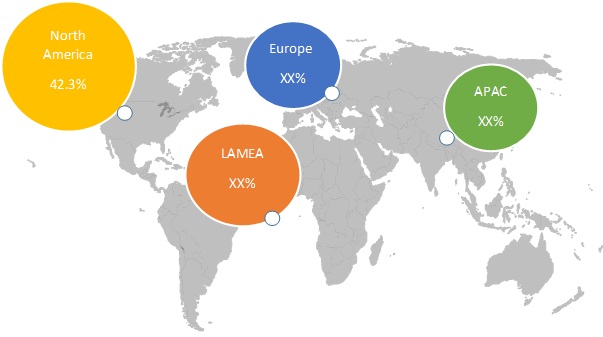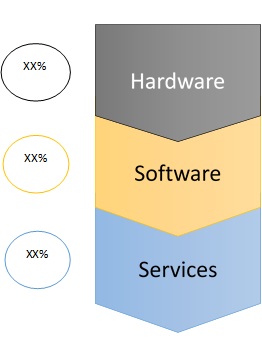Global Smart Office Market - Insights
A smart office is an advanced workplace where technology aids employees to work faster, better, and smarter. Smart offices are enabled with modern technological equipment’s such as beacons, sensors, and mobile apps, which help employees to perform the tasks in efficient and faster manner. This allows employees to dedicate their time for strategizing and business planning. Smart office majorly focuses on understanding and gaining insights of the problems and challenges faced by employees and designing a solution, which will aid in providing better environment at workplace. Rapid adoption of Internet of Things (IoT) with implementation of IoT sensors and IoT devices, along with cloud computing services and analytics is the major factor boosting growth of the market. According to Coherent Market Insights’ analysis, Asia Pacific is expected to be the fastest growing region in the global smart office market during the forecast period, owing to promotion of clean environment in the buildings and power management and conservation.
Global smart office market is expected to witness significant growth during the forecast period (2018–2026). The market growth is majorly attributed to increasing adoption of smart offices for different applications in energy management and saving. For instance IoT enabled lights reduce energy usage by switching off the lights when not in use. Furthermore, as per Coherent Market Insights analysis, growth of the smart offices market is propelled by the major advancement in IoT technology. For instance, according to CMI analysis, the number of IoT connected devices was 25 billion in 2017and is expected to witness high growth during the forecast period.
Figure 1. Global Smart Office Market Share (%), by Region (2017 & 2026)

To learn more about this report, Download Free Sample
Source: Coherent Market Insights, 2017-18
North America is expected to be the largest and fastest growing region in the smart office market during the forecast period, owing to increasing sales of smart devices such as smart lightings, IoT (Internet of Things) solutions, smart communication devices, and smart software in the region. As per Coherent Market Insights, the global sales of smart lighting was around US$ 49 Billion in 2016, which increased to US$ 57 Billion in 2017, which in turn is expected to aid in growth of the market.
Moreover, rapidly growing construction industry is expected to boost the number of building infrastructure in an innovative and cost effective way, in turn creating opportunities for the smart office solution providers. According to analysis by Coherent Market Insights, Asia Pacific commercial construction market was around US$ 1,341 billion in 2017, and is expected to reach US$ 2,489 billion by 2021. This is expected to create a lucrative market opportunity for smart office in India in the near future. However, there are still some restraints in smart office construction that limits growth of the market. Security is a major threat to smart offices, employee training in IT security is necessary in order to reduce the chance of attacks, which intend to gain access to the systems.
According to Cisco Canada, the Toronto office of Cisco enables modern work styles by connecting employees, processes, data, and things on a single data network, which have earned the title of 'smartest office building in the world.'
Figure 2. Global Smart Office Market Share (%), By Component (2017 & 2026)

To learn more about this report, Download Free Sample
Source: Coherent Market Insights, 2017-18
Increasing need to upgrade office infrastructure of existing office buildings is boosting growth of the smart office market. The enterprises are undergoing this change, owing to massive increase in consumption of energy resources that has direct impact on the operational cost of the enterprise. Hence, smart office solutions are implemented to minimize concerns related to consumption of energy resources. According to Coherent Market Insights analysis, major energy consumption that is around 17% of total energy in North America is consumed by commercial buildings, wherein office buildings contribute to more consumption of energy resources.
For instance, among total energy consumption in office buildings HVAC system (cooling, heating, and ventilation) contribute to around 51% of total energy usage and lighting represents around 25% of total usage, as these two parameters contributes three quarters of an office building energy use.
Some of the key players operating in the global smart office market include ABB Ltd., Cisco Systems, Inc., Crestron Electronics, Inc., Honeywell International Inc., Johnson Controls International PLC, Lutron Electronics Co. Inc., Philips Lighting Holding B.V., Miracle Group Inc., Siemens AG, Schneider Electric SA, Sensorsuite Inc., United Technologies Corporation, and others.
Share
Share
Missing comfort of reading report in your local language? Find your preferred language :
Transform your Strategy with Exclusive Trending Reports :
Frequently Asked Questions
Select a License Type
Joining thousands of companies around the world committed to making the Excellent Business Solutions.
View All Our Clients